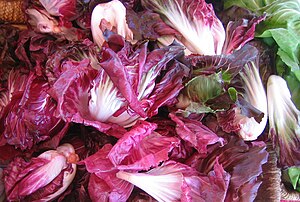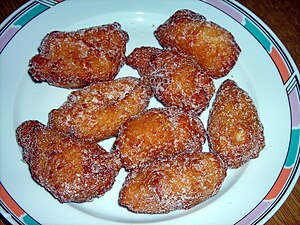The Saint Martin Celebration is an old traditional popular celebration in the North East of Italy that is rooted into the territory and has very old traditions
S. Martin xe 'ndà in sofita a trovar ea nonna Rita nona Rita no ghe gera S.Martin col cùeo par tera E col nostro sachetìn cari signori xe S.Martin
San Martin's short pastry cake
This short pastry cake is made in Venice to celebrate the feast day of Saint Martin, on 11th November every year, and it is a favourite with Venetian children who receive one from their grandparents and parents. The cake is in the shape of Saint Martin on horseback with his sword and, if you come to Venice in that period, you will see it in confectioners’ windows, decorated with sugar icing or coated with plain or milk chocolate and decorated with chocolate drops and candies
Oven-proof paper mould Download it here Prepare the paper mould used to cut out the cake. Cut a sheet of oven-proof paper measuring about 30x40 cm. Draw the shape of Saint Martin on horseback with his sword on the paper, cut it out and set it aside.
Alternatively, in Venice, during the period of the feast day, you can buy the cake mould in shops specialised in household goods.
Ingredients for a “Saint Martin” of 20x30 cm
For the short pastry: 250 gr flour 150 gr butter 100 gr sugar 1 egg yolk + 1 whole egg ½ sachet vanillin or vanilla flavouring
For the icing and decoration: 250 – 300 gr icing sugar 1 egg white 5 drops lemon juice 100 gr mixed sweets: chocolate Smarties, sugar sweets, candies, chocolate drops Cooking time: 15/20 minutes at 180°C
Preparation Light the oven. Prepare the pastry base by putting into a bowl, in this order, the flour, the sugar, the softened butter cut into small pieces, the yolk and the whole egg. Keep the extra egg white to one side in a bowl. Start mixing the ingredients by hand, crushing together the eggs, butter and sugar. Once they are fairly well mixed, add the flour and vanilla flavouring. Knead the mixture with your fingertips until it is homogeneous as regards both consistency and colour, working into a ball. Sprinkle some flour on a sheet of oven-proof paper and roll out the pastry into a rectangular sheep measuring about 30x40 cm and cut the outline of the cake. If you like, you can use the trimmings to make a round biscuit. Put the cake in the oven and bake till golden (it will take about 15/20 minutes). When the short pastry is ready, leave it to cool and start to prepare the icing. Put the egg white in a bowl and add the icing sugar, a teaspoonful at a time, stirring with a wooden spoon. When the first teaspoonful has been absorbed, add the second and so on, until you have added half the sugar. At this point squeeze 5 drops of lemon juice into the icing and keep stirring and adding the icing sugar as before. At the end the mixture will be quite thick and you will have to stir it energetically for a minute until it is nice and shiny. Pour the icing into a bag with a medium star-shaped nozzle and start decorating the biscuit. Scatter the biscuit as desired with chocolate drops, sweets or candies. When you have finished decorating it, let the icing “dry” for about 12 hours at room temperature.
An extra idea If you want, you can cover Saint Martin with melted chocolate or colour the icing with food colourings, choose the sweets for decorating it with your children, or change the shape of the cake, for example making biscuits with a hole at the top that you can decorate and hang on the Christmas tree.






















 This blog is about Venice and Photography not Scandinavia....but I think that due to the connection between St Lucy and Venice this recipe is a must!
This blog is about Venice and Photography not Scandinavia....but I think that due to the connection between St Lucy and Venice this recipe is a must!

 INGREDIENTS:
CABBAGE
CASTRA’
ONIONS, CARROTS
ROSEMARY, THYME, LAUREL AND JUNIPER IN A GAUZE BAG
EXTRA VERGIN OLIVE OIL
INGREDIENTS:
CABBAGE
CASTRA’
ONIONS, CARROTS
ROSEMARY, THYME, LAUREL AND JUNIPER IN A GAUZE BAG
EXTRA VERGIN OLIVE OIL

